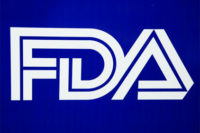Letters
Letter to the Editor

May we suggest some additional points to your Editorial in the April issue of Food Engineering Magazine regarding FDA’s proposal to update the Nutrition Facts Panel (NFP) as well as the serving size revision proposal? I appreciate that the appearance of the NFP is important as a communication tool to consumers, however; the issues go far beyond just the appearance. The proposed changes to the NFP means that every food label in the United States will have to be updated; this will cost the food industry hundreds of millions of dollars that will ultimately be borne by consumers. We have a responsibility to our consumers to assure that the added cost is commensurate with added value and consumer benefit. We need to ask FDA to answer a few important questions that will determine the success or failure of this major update.
- What impact will the proposed changes to the NFP have on consumer behavior? Will the changes lead to improved diet selection decisions by consumers? Obesity and obesity-related diseases have skyrocketed in the US since the Nutrition Labeling and Education Act (NLEA). Did the rise in obesity happen because of NLEA or in spite of it?
- Will the proposed changes in the NFP improve consumer understanding of the label and increase clear communication to consumers, or will actually make it worse? Will the changes create confusion or clarity for consumers?
- Will the new emphasis on specific parts of the NFP help consumers make better informed decisions, or cause them to ignore other elements of the panel when making their decisions?
- Will increasing the Reference Amount Customarily Consumed (RACC) on many foods to better coincide with actual consumer intake result in reduced portion sizes, and justify the portions consumers now partake of, or will it communicate permission to consume even larger portions? In many cases, the new serving sizes will double—this could confuse consumers and make them think they can eat twice as much. How will consumers interpret this change?
- FDA has planned some studies to use consumer insight to guide the proposed changes to the NFP. For example, there will be studies on added sugar labeling, the NFP footnote, and consumers’ perception of the new format. But those studies won’t take place until after the comment period closes. Wouldn’t it be better to conduct the consumer studies, review the outcome and share the findings of the consumer research before the public comments deadline? We need a solid, scientific basis, consumer data and a transparent process on which to base the proposed changes to assure we achieve the goal of helping consumers make better dietary choices.
- And finally, will consumers read or notice the changes? An article in the Washington Post on April 27th claims only about a third of consumers actually read food labels. Will the industry spend hundreds of millions of dollars to reach consumers who don’t read the label anyway? Revising the label is only part of the job. FDA and industry will need to work together to educate the public on why the changes occurred, and what they mean, so they will be widely embraced and understood.
We think we need to pressure FDA to do the homework necessary to fully answer these key questions before they tinker with nutrition labels without any basis (scientific and consumer data) on the impact and value to the American public.
Respectfully,
Lee Sanders
Senior Vice President,
Government Relations & Public Affairs
American Bakers Association
Len Heflich
Chair, Food Technical
Regulatory Affairs Committee
American Bakers Association
Looking for a reprint of this article?
From high-res PDFs to custom plaques, order your copy today!





